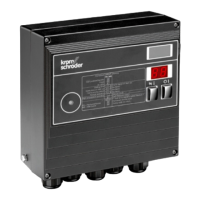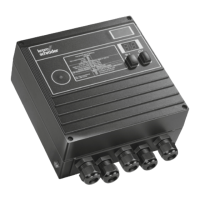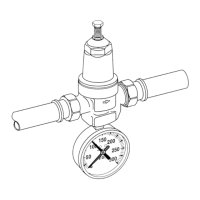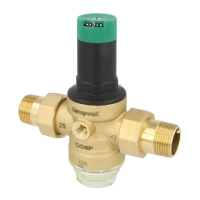BCU 460, BCU 465 · Edition 11.19 48
Valve proving system
6.2 Proof of closure function
The proof of closure function monitors the function of
a gas solenoid valve (V1, V2, V3 orV4). A limit switch on
the gas solenoid valve signals the closed position of the
valve to the BCU for this purpose. ParameterI073 must
be set to3 in this case, see page116 (Function of in-
put 38).
Parameter A101, A102 or A103 is used to define the
valve from which the signal for the closed position must
be received:
A101, A102 or A103 = 48 (V1), 49 (V2), 50 (V3), 51 (V4),
see page103 (Function of sensor 1).
Z
Z
6 60
V1 V2
38
GZL
By checking the closed position using the proof of clo-
sure function, the BCU complies with the requirements
of NFPA85 (Boiler and Combustion Systems Hazards
Code) and NFPA86 (Standard for Ovens and Furnaces).
6.2.1 Program sequence
When the start-up signal is received at terminal1, the
BCU checks that the valve is in its closed position using
the POC switch. If a signal is not received at terminal38
from the POC switch after a timeout time of 10s (valve
is closed), the BCU performs a fault lock-out with fault
message“Ec1”.
As soon as the BCU has opened the valve, it queries the
open position of the valve via the POC switch. If a sig-
nal is still being received at terminal38 from the POC
switch after a timeout time of 10s, the BCU performs a
fault lock-out with fault message“Ec8”.

